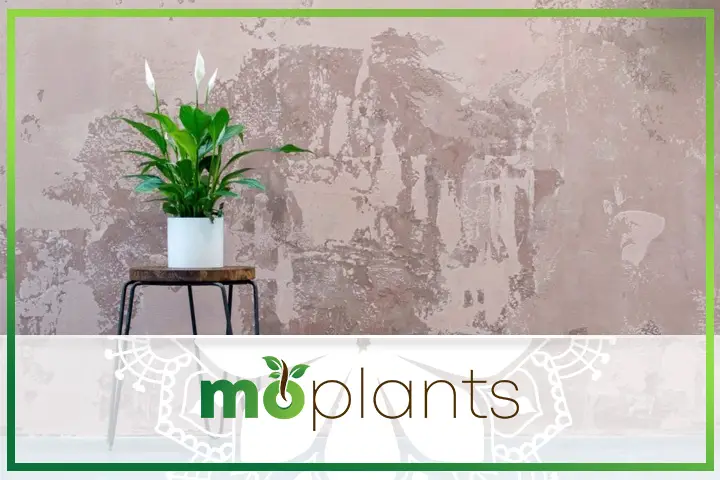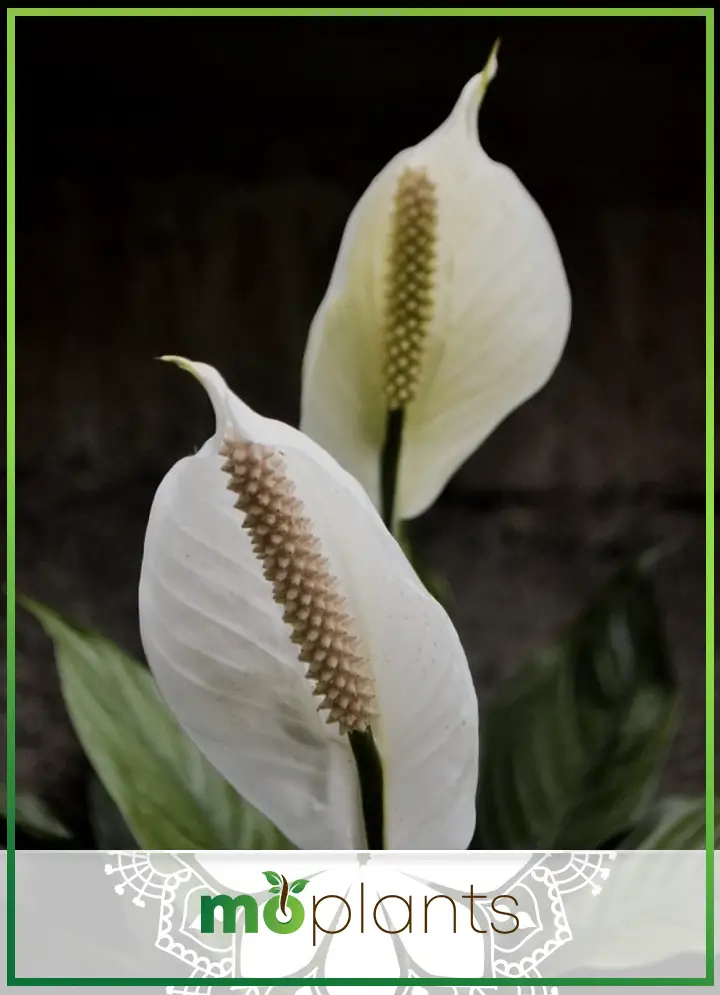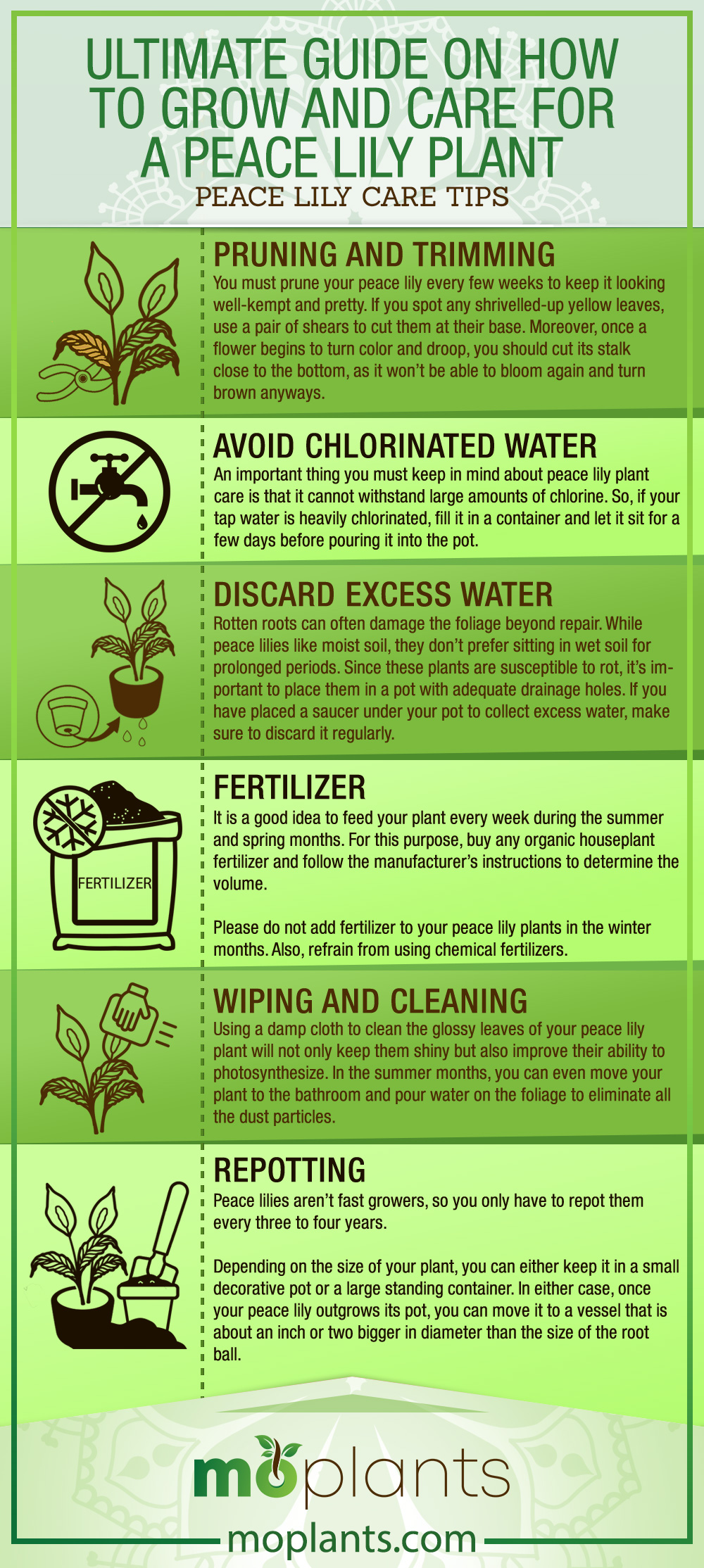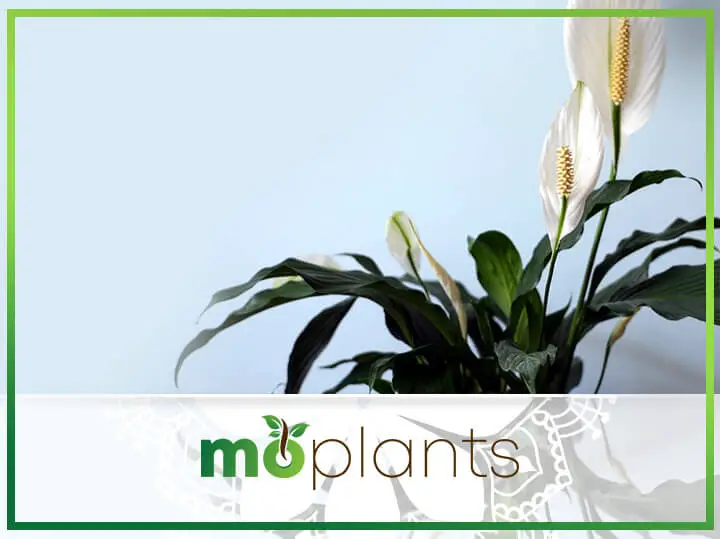With their lustrous foliage and exquisite flowers, peace lilies make for gorgeous houseplants. You can place the small varieties of the tropical plant on your window sill or tabletop to brighten up your room, whereas a larger peace lily plant would look great on the floor of your living room or bedroom.
Apart from adding to the aesthetics of your home, peace lilies also have incredible air-filtering properties. These plants can break down and neutralize toxic gases such as formaldehyde, carbon monoxide, benzene, substantially improving the indoor air quality of your home. Since peace lilies also eliminate odors and produce oxygen, they are a great option for bedrooms, bathrooms, and kitchens, among other most frequented areas.
In addition, they are very tolerant of low light and can flourish even in less-than-ideal conditions. Peace lily plants are also rather low-maintenance and don’t take too long to adapt to their new environment.
Introduction: Peace Lily

The botanical name of peace lily is Spathiphyllum wallisii. Native to the rainforests in South and Central America, this tropical plant thrives in warm and humid environments. If grown outdoors in ideal conditions, peace lilies can grow as tall as 6 feet. If treated with love and care, they may even bloom twice a year, sprucing up the green foliage with beautiful flowers for several months.
Despite its name, the peace lily is not an actual lily. Instead, it belongs to the Araceae family, the members of which are collectively known as aroids. The exotic plant gets its name from the large petal-shaped upright leaf that resembles the white flag of peace. The aromatic white blooms of a peace lily consist of a white sheath-like leaf known as spathe and a thick spike called spadix that houses tiny white or light green flowers. Meanwhile, the leaves of this popular houseplant are shaped like an oval with distinct, pointy ends and a glossy texture.
The graceful silhouette and easy-going nature of peace lilies also make them ideal for offices and dorm rooms. Even if you don’t know much about houseplants or struggle to keep them healthy, growing and looking after peace lilies can be a good start. With a little care and affection, these plants can turn into a focal point of any room.
How to Grow a Peace Lily Plant

Though peace lilies aren’t particularly hard to grow, here are some tips on how to grow these tropical houseplants that you may find helpful.
Finding the Best Spot
The best thing about peace lilies is that they can grow anywhere. You can stick them in a closet or any dark corner of your home, and they will still remain green and glossy. So, if you only want foliage, you can practically place your plant in any room. However, if you are hoping it would bloom, please place your plant near a window with sheer curtains so it can receive bright but filtered light.
You should also make sure not to pick a spot right before an air-conditioner or an open window, as peace lilies are sensitive to cold drafts.
Furthermore, if you live in US zones 10, 11, or 12, you can easily grow these tropical plants outdoors. Just plant your peace lilies in a shady spot with moist soil, and you’re good to go.
Ideal Temperature
Peace lily plants prefer temperatures ranging between 65 and 85 degrees Fahrenheit. If you plant them outdoors, make sure to bring them back in once the weather begins to get colder, as peace lilies cannot withstand temperatures below 45 degrees Fahrenheit.
Moreover, please keep your houseplants away from your heating and cooling units, as excess heat and cold air can be detrimental to their growth.
Humidity Level
Being a tropical plant, peace lily enjoys a humid environment. Therefore, in an ideal scenario, the humidity level in your home must be above 60% for this plant to grow. Spritzing the plant with distilled water during the growing season is also a good practice if you live in a drier area.
Furthermore, you can invest in a humidifier.
Exposure to Sunlight
Like most other popular houseplants, peace lilies prefer a medium level of indirect sunlight. They can also grow well under fluorescent lights, but it is recommended to place them in partial shade where harsh sun rays won’t scorch their leaves.
If you have a west or north-facing window, place your peace lilies about six to eight feet away from it. This location will provide your plant with sufficient light without exposing it to harsh sunlight.
Watering Frequency
When it comes to growing a peace lily, drooping is a visible sign the plant is thirsty. In other words, you don’t have to guess when to water it next as this beautiful plant begins to sag when the soil gets too dry. In general, it is a good idea to water them once or twice a week. In the summer months, you can also mist the leaves with water to promote healthy growth.
On the other hand, watering your peace lily plant weekly or biweekly should be sufficient during the winter months. Just keep an eye on the soil to ensure it doesn’t dry out.
Potting Mix
Whether you are growing your peace lily indoors or outdoors, make sure to choose a well-aerated potting mix that is rich with nutrients and organic material.
Propagation
You can easily propagate peace lilies while repotting them. First, check the plant for any small offshoot crowns before removing it from its container. Next, you can either cut away the adjacent crowns or cut a section of the main root ball for this propagation. If the section has a couple of leaves along with roots, that’s even better.
You can put the cutting in a small container and fill it with good quality soil. Also, water it thoroughly to keep it moist. The new leaves will begin to develop soon.
Infographic

Peace Lily Care Tips

Let’s take a look at some of the most useful peace lily plant care tips that will keep your plant happy for a long time.
Pruning and Trimming
You must prune your peace lily every few weeks to keep it looking well-kempt and pretty. If you spot any shrivelled-up yellow leaves, use a pair of shears to cut them at their base. Moreover, once a flower begins to turn color and droop, you should cut its stalk close to the bottom, as it won’t be able to bloom again and turn brown anyways.
In case of pest infestation or any other disease, don’t forget to disinfect your tools before trimming or pruning the plant. This practice will lower the chances of other leaves and flowers getting infected.
Avoid Chlorinated Water
An important thing you must keep in mind about peace lily plant care is that it cannot withstand large amounts of chlorine. So, if your tap water is heavily chlorinated, fill it in a container and let it sit for a few days before pouring it into the pot.
Discard Excess Water
Rotten roots can often damage the foliage beyond repair. While peace lilies like moist soil, they don’t prefer sitting in wet soil for prolonged periods. Since these plants are susceptible to rot, it’s important to place them in a pot with adequate drainage holes. If you have placed a saucer under your pot to collect excess water, make sure to discard it regularly.
Fertilizer
It is a good idea to feed your plant every week during the summer and spring months. For this purpose, buy any organic houseplant fertilizer and follow the manufacturer’s instructions to determine the volume.
Please do not add fertilizer to your peace lily plants in the winter months. Also, refrain from using chemical fertilizers.
Wiping and Cleaning
Using a damp cloth to clean the glossy leaves of your peace lily plant will not only keep them shiny but also improve their ability to photosynthesize. In the summer months, you can even move your plant to the bathroom and pour water on the foliage to eliminate all the dust particles.
Repotting
Peace lilies aren’t fast growers, so you only have to repot them every three to four years.
Depending on the size of your plant, you can either keep it in a small decorative pot or a large standing container. In either case, once your peace lily outgrows its pot, you can move it to a vessel that is about an inch or two bigger in diameter than the size of the root ball.
Ideally, repotting should be done in early spring.
Infographic

Common Peace Lily Problems and How to Solve Them
Now that we know the basic peace lily care tips let’s look at some of the issues that might pop up while looking after these delightful plants.
Yellow Leaves
It is natural for leaves to turn yellow as they age. However, overwatering can also be a culprit behind the foliage losing its color. If the new leaves are still green and glossy, there’s nothing to worry about. However, if the new leaves are also beginning to change their color, it might be time for you to cut back on watering and let the soil dry out a little.
Brown Edges
Exposure to direct sunlight can scorch the foliage, leaving your leaves with brown edges. To troubleshoot this problem, move your peace lily indoors or to a different spot and spritz it with water. Increasing the level of humidity in your home may also work wonders for the plant.
Fungus gnats
These tiny gnats are among the most common houseplant pests. Usually, they infest the plant due to overwatering. However, you can use insecticidal soap to get rid of them.
Zero blooms
Peace lily only blooms when it receives sufficient light. If your plant hasn’t bloomed yet, moving it outdoors or to a brighter spot in your home can be a good idea.
Is Peace Lily Toxic?
Peace lilies may not be as poisonous as actual lilies, but they can be toxic to pets and small children as they contain calcium oxalate crystals. However, they are not lethal.
If you have young kids, it may be a good idea to educate them about the toxic nature of the plant. Meanwhile, if you are dealing with toddlers or cats and dogs, consider moving the peace lily plant to a spot that is not easy to access. It is rare for kids and pets to ingest a large amount of this plant as it is very unpleasant to chew. Nonetheless, you should immediately visit a doctor or a veterinarian if you notice a bite mark on the foliage.
Symptoms of Peace Lily Poisoning
These are some of the most common symptoms of peace lily poisoning:
- Oral irritation
- Skin irritation
- Drooling
- Difficulty swallowing
- Nausea
Consult a medical professional as soon as your child or pet develops any of these symptoms.
Varieties of Peace Lily
Here are some of the most popular hybrid varieties of peace lilies.
Spathiphyllum ‘Piccolino’
Featuring dark shiny leaves and pure white flowers, Spathiphyllum ‘Piccolino’ is a dwarf variety of peace lily. It is compact and can be a great addition to your nightstand or coffee table.
Spathiphyllum ’Power Petite’
Another small cultivar of peace lily, this adorable houseplant only grows up to 15 inches. It has glossy leaves and long-lasting small flowers. You can put these plants in small decorative pots and place them anywhere in your home.
Spathiphyllum ‘Mauna Loa Supreme’
Perhaps the most common type of peace lily, Spathiphyllum ‘Mauna Loa Supreme’, has long deep-green leaves and can grow as tall as 4 feet tall. This houseplant isn’t very demanding, which makes it easy to care for.
Spathiphyllum ‘Sensation’
Known for producing deeply-ribbed 20-inch long leaves, Spathiphyllum’ Sensation’ is the largest peace lily hybrid. It is a statement-making plant that can add a splash of color to any dull and dreary corner of your home.
Spathiphyllum ‘Starlight’
A free branching variety of peace lily, this stunning interior plant has narrow leaves with a dark green hue and wavy margins. Spathiphyllum ‘Starlight’ grows fast and can produce as many as 20 blooms on a single plant.
Peace Lily Plant FAQs
Let’s check out some of the most frequently asked questions about peace lily care and growth.
How do I get my peace lily to flower again?
If your plant hasn’t bloomed in a while, consider moving it to a warmer and more humid spot in your home. You can also try watering it more often to keep the soil moist and feed it an organic fertilizer to encourage flowers to grow.
Pruning spent flowers and cutting dead stalks is also very important.
How long do peace lilies live?
In an ideal home environment, peace lilies can live between three and five years.
How tall do peace lilies grow? If you are growing your peace lily indoors, it will most likely grow up to 4 feet tall. However, the ‘Sensation’ variety can get as tall as 6 feet with an equal width.

